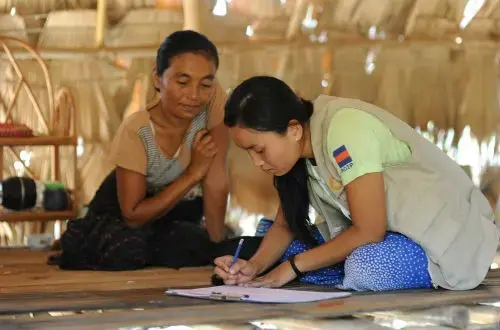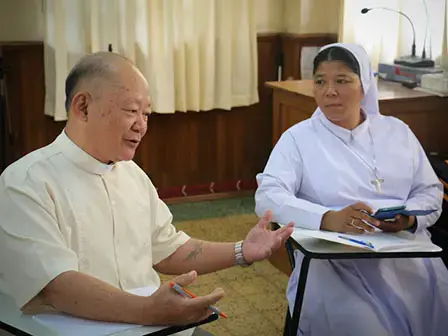Censuses were taken regularly in Myanmar during the British administration of the country from 1872 until 1941. After independence, with support from UNFPA, Population and Housing Censuses were conducted in 1973 and 1983. The 2014 Myanmar Population and Housing Census was the first in more than 30 years. A census gives a comprehensive picture a country’s people and of their social and living conditions. Only a census provides complete detail right down to the smallest area, and the results are an essential tool for effective policy, planning and decision making.
UNFPA Activities
UNFPA has provided, and is still providing, critical technical and financial support towards the 2014 Myanmar Population and Housing Census together with donor countries. The census was an undertaking on massive scale and with profound significance for Myanmar’s future and for its political and economic transition process.
Nearly 98 per cent of the population was counted, engaging more than 100,000 enumerators across the country for 12 days. The exercise included drawing 80,000 maps and distributing more than 14 million questionnaires. Remote areas, never previously counted in a census (such as the Wa area), were included thanks to dedicated negotiations between the government and leaders of self-administered areas. An observer team of international experts and Myanmar researchers who witnessed a sample of the enumeration in every state and region vouched for the overall quality of the census enumeration.
The main census results were published in May 2015, providing much-needed evidence-based data for planners and policymakers to formulate, implement, monitor and evaluate development programmes and policies. The census plan also includes 13 in-depth thematic reports on key areas such as education, fertility, mortality, migration, disability, population projections, gender, housing conditions and assets, youth, and elderly.
The preparation and publication of the census results is complimented by consultation, distribution and training programmes aimed at planning officers, civil society, faith-based groups, media, political parties and academia. These activities help build capacity for informed decision making, allowing local stakeholders to develop strategies that address development priorities in their own constituencies.





